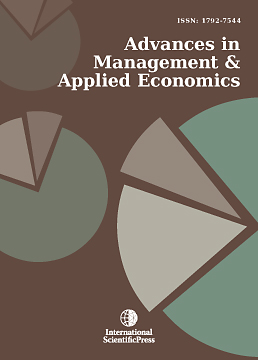Advances in Management and Applied Economics
The Nonlinear Saving Growth Model
-
 [ Download ]
[ Download ]
- Times downloaded: 10911
Abstract
A financial crisis may be described by large decreases in the prices of stocks, real estate, or other assets.Namely, in an open economy, government budget deficit, as a negative public saving, raises real interest rates, crowds out domestic investment, decreases net capital outflow, decreases the level of asset prices, causes the domestic currency to appreciate. A decrease in aggregate demand causes output and prices to fall. The recession may further increase budget deficit. The basic aim of this paper is to provide a relatively simple chaotic saving growth model that is capable of generating stable equilibria, cycles, or chaos. A key hypothesis of this work is based on the idea that the coefficient ð =â / ( g+â+n-1) plays a crucial role in explaining local growth stability of the saving, where, n - net capital outflow as a percent of the real gross domestic product; g – government consumption as a percent of the real gross domestic product; â – the accelerator.
